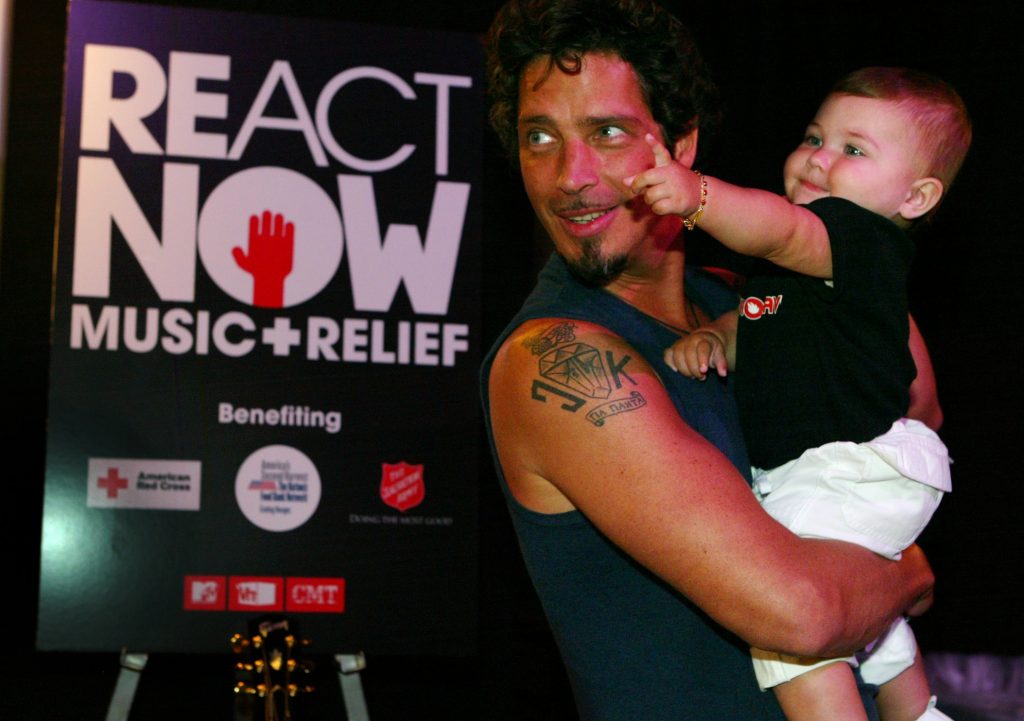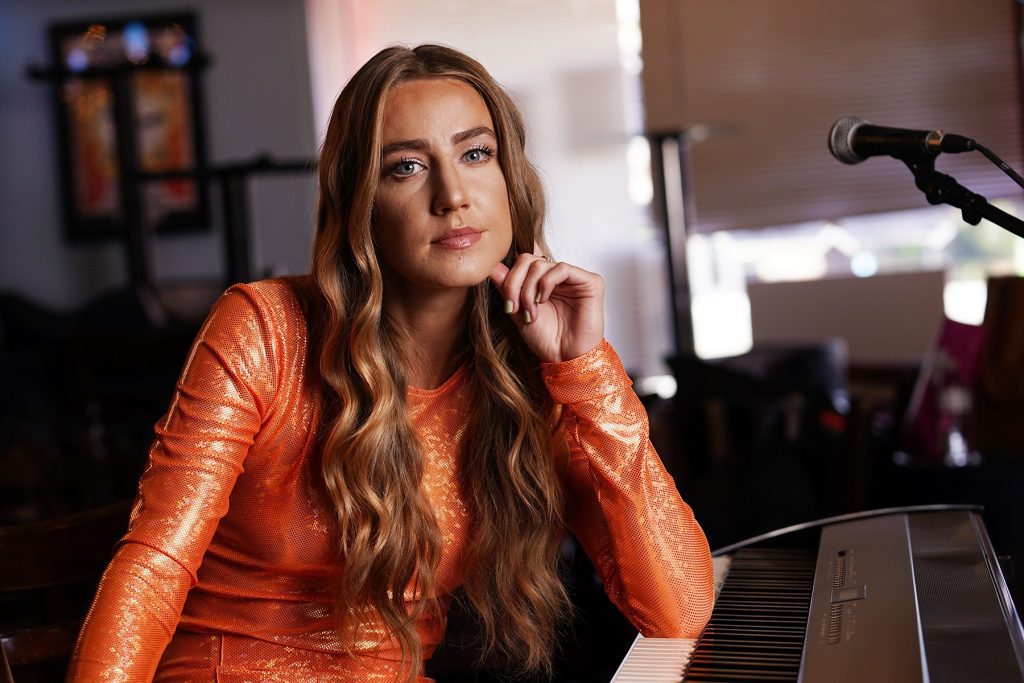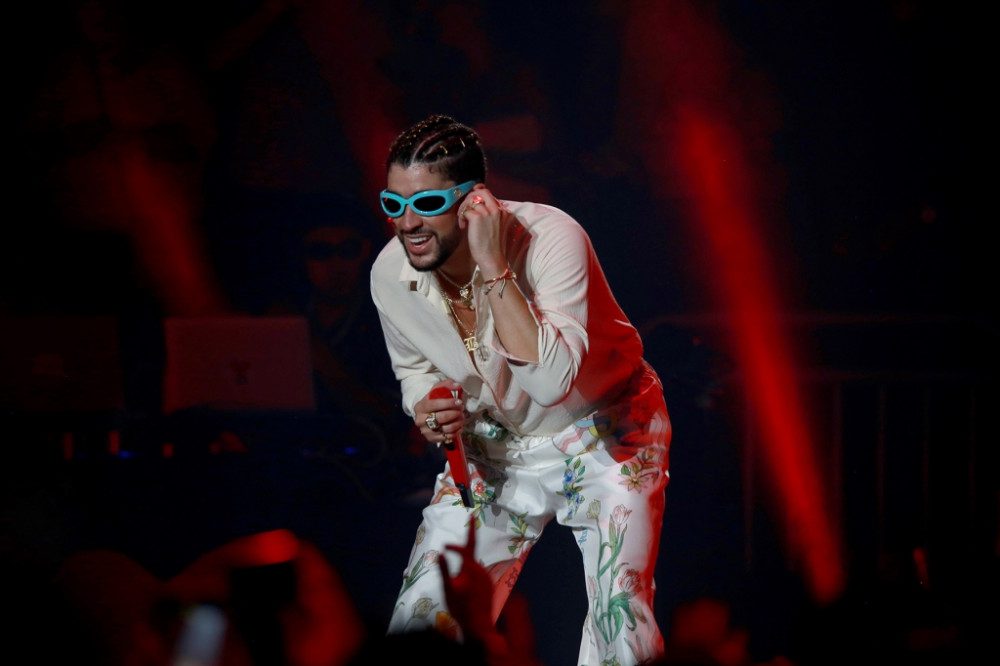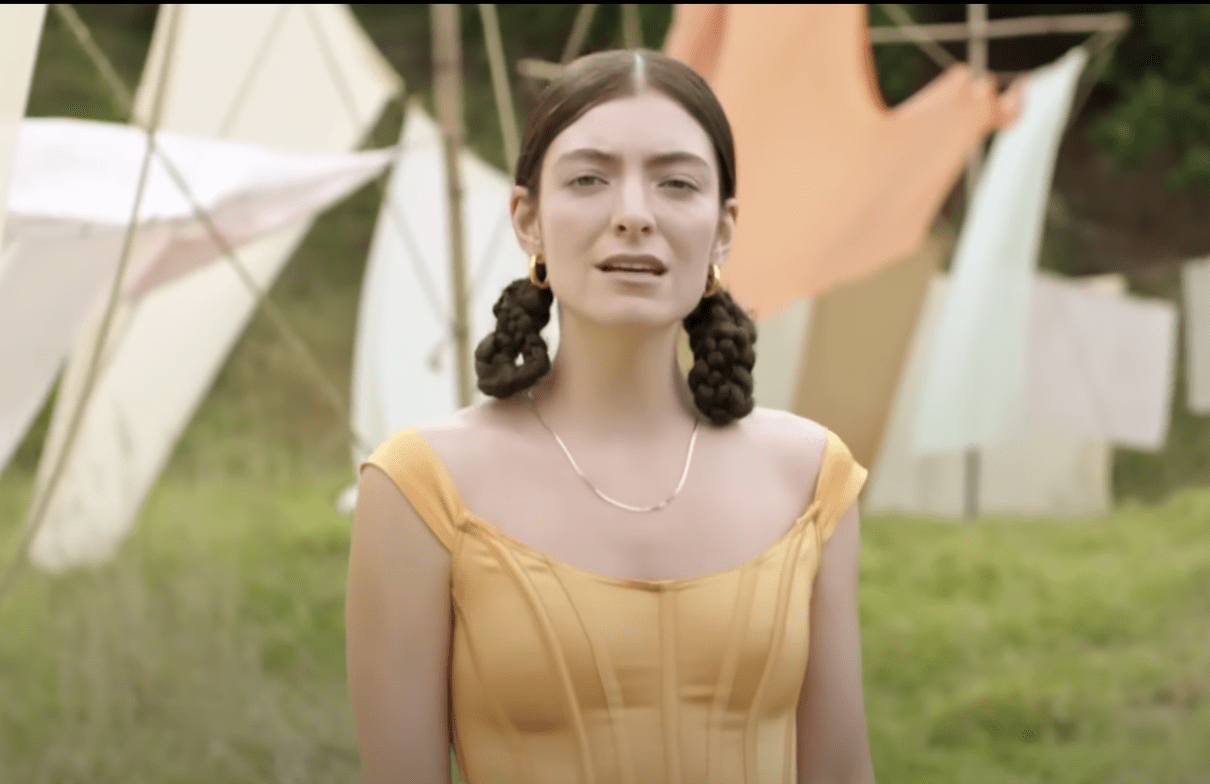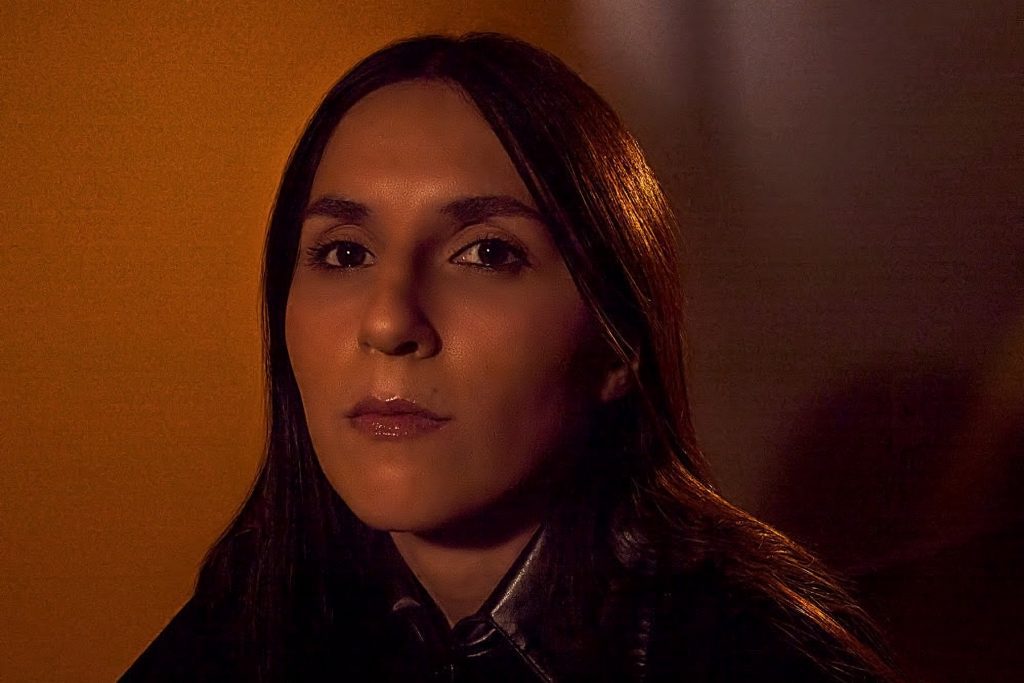
How Nite Jewel Broke Through Heartbreak
No Sun, the disarmingly beautiful album from the singer, composer, and producer Nite Jewel, is full of open spaces. The artist, whose real name is Ramona Gonzalez, lets her gauzy voice float out of long, atmospheric expanses, curling like smoke through delicately arranged synths and subtle bass lines. She offers careful moments of stillness, giving the listener room to sit with the music and find their own quiet catharsis through her songs.
The album came out of a period of upheaval and transition for Gonzalez. Many of the songs were written toward the end of her 12-year marriage and capture the pain and heartbreak she was going through at the time. Gonzalez had also started a PhD in musicology and had been examining the ways in which women’s voices have served as vehicles for lament throughout history — an idea that appears repeatedly in her tender songwriting and aching vocal performances.
She spoke to IndieLand about the process of putting the album together, how it’s marked an evolution for her as a producer, and how she hopes it connects with people going through tough experiences of their own.
blogherads.adq.push(function () {
blogherads
.defineSlot( ‘medrec’, ‘gpt-dsk-tab-latin-article-inbody1-uid0’ )
.setTargeting( ‘pos’, [“mid”,”mid-article”,”btf”,”in-article1″] )
.setSubAdUnitPath(“music//latin//article//inbody1”)
.addSize([[300,250],[2,2],[3,3]])
;
});
This interview has been condensed and edited for clarity.
How do you see No Sun as a departure from your past work?
The one thing that I don’t do as an artist is stick to the same exact formula. I know there are some things that are just a part of me musically that I love to include, whether it’s deep bass lines or certain melodies, but I try to challenge myself with each record. I think with my sophomore album, I had a similar idea that I had for No Sun, where I wanted to record analog and I wanted to have sequencers — I was inspired by Brian Eno, actually, where I wanted to produce in this way that felt really experimental. The record was ambitious, and I don’t think it hit exactly how I wanted it to production-wise and songwriting-wise. For No Sun, I finally got to do this vision that I’ve had for so long, which is very improvisatory, experimental, and focused on working outside of the pop formula.
What also helped was that I was seeing a lot of contemporary artists that I admired taking pop music to a different place, like with Blonde by Frank Ocean, or with Solange’s records, like When I Get Home. It seemed like there was a place for all these wacky ideas that I had for years, and that people would understand.
This album also came at a time that you’ve said marked a lot of huge changes in your personal life. How did those experiences impact the album?
Big changes, huge changes. I started planning out the record around late 2017, early 2018, when I got a Moog sequencer. At first, I only had instrumental ideas. It was a little similar to Brian Eno’s processes, or what I’ve read about it: It was about creating a sonic environment and choosing your tools, and I had a notebook where I was writing out different ideas that I had for just the instrumental sounds. But by the middle of 2018, my life was beginning to fall apart pretty dramatically: My marriage of 12 years was falling apart, I had to leave my house, I was homeless for about two months. All the while, I was carrying my little setup with me from place to place — my synths and stuff, from friend’s house to friend’s house — and recording where I could. Although it was a difficult time, I felt really inspired because there were so many ideas that were coming to me lyrically.
That’s when poetry happens, when you’re transitioning or there’s some tumultuous situation. It was very much the songs writing themselves, and the lyrics themselves were inspired by the difficulties and the trauma that I was going through at the time. But I also knew these lyrics would be potent for a more universal purpose: so that I could communicate something that could be a universal feeling, because I was feeling it so deeply. I wrote most of the songs in a period of six months after that and then, I began to mix and hone and polish — and that’s the part that takes forever, especially because I’m self-funded and I run my own label.
Throughout this entire experience, you were also working on your PhD in musicology. Did the experience of thinking about music academically inform the creative process?
Sometimes the analytical mind can get in the way of the creative mind, but when my studies began, I’d already pretty much finished the creative process. I was studying the history of music, the history of women’s voices, the history of women singing sad songs, and all of that was enriching my perspective on my own music. I was looking back at the songs I had written and seeing them through this long historical lens about what women’s empowered position is throughout musical history, what they do, and what they’re barred from doing — because women have been historically constrained in their creative practices as well. It just allowed me to be riskier, actually, because once you see music in a bigger, longer tradition, you don’t worry about things that are just a concern of the moment — trends and things like that.
blogherads.adq.push(function () {
blogherads
.defineSlot( ‘medrec’, ‘gpt-dsk-tab-latin-article-inbody2-uid1’ )
.setTargeting( ‘pos’, [“mid”,”mid-article2″,”btf”,”in-article2″,”mid-article”] )
.setSubAdUnitPath(“music//latin//article//inbody2”)
.addSize([[300,250],[300,251],[2,4],[4,2]])
.setLazyLoadMultiplier(2)
;
});
Like you mentioned, you examine the tradition of women’s voices as a vehicle to express lament and pain on this album, and some of that comes directly from your studies. Can you talk more about how you become interested in that concept and how it played out here?
Women are given this role throughout history to express collective grief for people, for cultural communities. I’m doing a paper on Sade and her album Lover’s Rock right now, and she says, “I’m crying everyone’s tears.” That’s embedded in trauma, in the trauma that people experience through oppression and racism. Women experience that, Black people experience that, and there are intersectional concerns there and trauma that intersect all different kinds of people in different positions in society… My album is not necessarily speaking collectively for a community in my intention. But I wanted the album to speak to people in [a specific] situation, which is a performance of trauma in a way.
You also center your voice here much more than you have on previous projects.
It was done a lot through improvisation. So, for instance, the first song, “Anymore,” and the track “No Escape” were these sequences that I had going and going and going, and I was just playing chords or singing along to it, just kind of improvising. It was kind of like treating my voice as an instrument and freestyling. What I didn’t necessarily do is cut and paste my voice afterwards into a pop format. So, in that way, the voice is much more flexible and elastic, and the verse-chorus structure is not as much of a prominent concern as it would be in your normal pop song.
I also made a specific decision not to center on drums on this record. A lot of pop songs in this day and age start with drums. If you go to a songwriting session in L.A. with a hotshot young producer and a singer, they’re going to start with a beat. There’s almost a gender hierarchy embedded in that, where male producers are meant to make beats and women are meant to sing and it’s top-to-bottom. And as I was making this record, I was just like, “I am so done with this idea.” I was breaking up with my husband, who is an incredible producer and makes amazing drums. There was a little bit of anger there, where I was like, “No more drums.” We’re fine now, but at the time I was like, “I’m never using drums again.” Obviously, there is percussion on the record, but it was added afterwards, and a lot of it, I programmed myself or I got my friend to play. But I was experimenting with the hierarchy of production that we’re so used to.
blogherads.adq.push(function () {
blogherads
.defineSlot( ‘medrec’, ‘gpt-dsk-tab-inbodyX-uid2’ )
.setTargeting( ‘pos’, [“mid”,”mid-articleX”,”in-articleX”,”mid-article”] )
.setSubAdUnitPath(“music//article//inbodyX”)
.addSize([[300,250],[300,251],[3,3],[620,350]])
.setLazyLoadMultiplier(2)
;
});
Did No Sun end up providing catharsis for you in any way?
I think there were different stages of catharsis. There was the catharsis of finalizing it, finishing it and feeling like it’s done. And there was the catharsis of sharing it with my ex-husband and hearing him say that he appreciated it and he listened to it. So, there’s that stage of this album as communication. Then there’s the album that’s just an artwork. And then there’s the third cathartic moment, which is releasing the record, and having people say [they] appreciate it. That is like another sort of beautiful process. [People] are noticing the production and noticing the composition, and being recognized as a composer is something that I’ve wanted for a long time… I really wanted this to shine a light on my skills as a composer and producer.
How’s your PhD going?
It’s fun. Actually, fun is not the right word. It’s enriching, but I still have two more years. I have my master’s right now, and I passed my exams. Once October starts is when the intense work towards your dissertation begins. Right now, the case study that I’m working on is on Sade; I’m doing a paper on her right now. And I also did a paper on Rosalía — pretty much my life for the past year was focusing on her. I got so deep into El Mal Querer and flamenco. I was struck by the fact that she was doing a historical narrative on lament practice in Spain, because the album is based on this 13th century text… I haven’t done a lot of research on Lana Del Rey, but I’m going to include her as a case study. And perhaps one more. I just have to choose really wisely, because I want to represent a lot of different women from different walks of life in the 21st century so that I can examine the power differential between these different kinds of laments. It’s really important to me.

